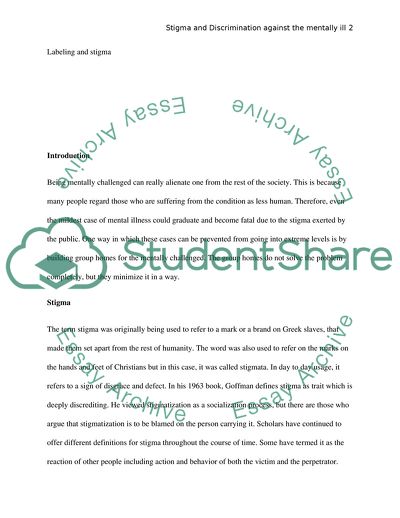Cite this document
(Stigma and Discrimination Against the Mentally Ill Report Example | Topics and Well Written Essays - 1250 words, n.d.)
Stigma and Discrimination Against the Mentally Ill Report Example | Topics and Well Written Essays - 1250 words. https://studentshare.org/sociology/1769906-cec-paper
Stigma and Discrimination Against the Mentally Ill Report Example | Topics and Well Written Essays - 1250 words. https://studentshare.org/sociology/1769906-cec-paper
(Stigma and Discrimination Against the Mentally Ill Report Example | Topics and Well Written Essays - 1250 Words)
Stigma and Discrimination Against the Mentally Ill Report Example | Topics and Well Written Essays - 1250 Words. https://studentshare.org/sociology/1769906-cec-paper.
Stigma and Discrimination Against the Mentally Ill Report Example | Topics and Well Written Essays - 1250 Words. https://studentshare.org/sociology/1769906-cec-paper.
“Stigma and Discrimination Against the Mentally Ill Report Example | Topics and Well Written Essays - 1250 Words”. https://studentshare.org/sociology/1769906-cec-paper.


